Conférences invitées
Tutorial (x1)
|
“Atomic Layer Deposition (ALD): a versatile conformal thin film deposition method with atomic-level control for perovskite-based solar cells”
|
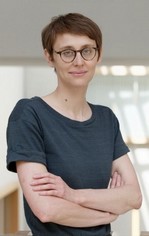 |
|
Nathanaelle Schneider is a CNRS Researcher in the laboratory of the Institut Photovoltaïque d'Ile-de-France (IPVF). She was recruited in 2013 after a PhD in Chemistry at Heidelberg and Strasbourg universities (summa cum laude distinction). Her research is focused on the synthesis of new functional materials by ALD (Atomic Layer Deposition) for photovoltaic applications. Using contributions of organometallic chemistry, in-situ characterization, surface science, it has led to new methodological approaches for the design of ALD precursors, material solutions for photovoltaic devices and new functional materials. She is the Director of the GDR RAFALD (Réseau des Acteurs Français de l’ALD). In 2020, she was awarded the CNRS bronze medal.
Google Scholar
|
|
|
|
|
Invited speakers (x7)
|
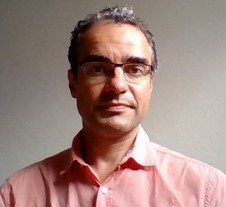 |
|
Dmitry Aldakov (CR CNRS, HDR) holds a PhD degree in Photochemistry from Bowling Green State University (USA) from 2004. After postdoctoral stays at SPrAM (Grenoble) and LPICM (Palaiseau), he obtained in 2011 a CNRS researcher position at SyMMES lab at CEA Grenoble. His current research interests include colloidal nanocrystals (quantum dots) and novel metal halide perovskites synthesis, as well as surface and interface engineering and study for the applications in solar cells, photo(electro)catalysis, and photodetection. A particular focus is made on the development of the eco-friendly materials. He has co-authored 45 articles and 2 patents. He is a steering committee member of the GDR HPERO network, of LABEX Arcane, and of the European School of Nanosciences and Nanotechnologies (ESONN).
Google Scholar
|
|
|
|
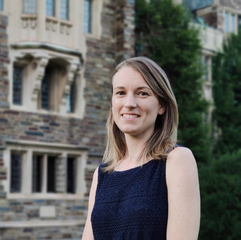 |
|
Julie Euvrard is a Lecturer (Assistant Professor) in the Department of Physics at Imperial College London. Her research focuses on the transport and optoelectronic properties of emerging semiconducting materials for solar energy applications, including perovskites and organic semiconductors. In particular, she is using advanced Hall and carrier-resolved photo-Hall techniques, new and powerful tools that hold promise to rapidly access fundamental properties of materials for use in energy harvesting devices. Prior to her current position, Julie Euvrard was a Distinguished Postdoctoral Fellow at the Andlinger Center for Energy and the Environment at Princeton University, USA, working with Prof. Barry Rand and Prof. Antoine Kahn (2021-2022). She also worked in the group of Prof. David Mitzi at Duke University, USA, as a postdoctoral associate (2018-2021). Julie Euvrard earned a PhD at CEA Grenoble, France, and University Lille I, France, where she studied electrical doping in organic semiconductors with Dr. Dominique Vuillaume, Prof. Antoine Kahn and Dr. Amélie Revaux.
Google Scholar
|
|
|
|
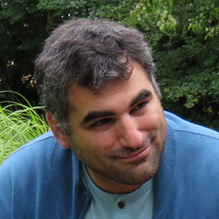 |
|
Mikaël Kepenekian is a CNRS Researcher at the Institut des Sciences Chimiques de Rennes (ISCR). After a PhD in Computational Chemistry focused on molecular magnetism at ENS Lyon and CEA Grenoble, and a postdoctoral position in Catalunya at ICN2, he joined, in 2013, the ISCR where he investigates surface and interface effects in hybrid systems and materials for energy applications. In addition to the study of supported molecules, a large part of his research activity is dedicated to the rationalization of exotic behaviors in halide perovskites thanks to state-of-the-art first-principles based approaches. Among his main contributions lie the in-depth description of excitonic properties of lower dimension materials and of Rashba-Dresselhaus effects in halide perovskites. Since 2020, he acts as the Associate vice-president of Université de Rennes for libraries and open science.
Research Gate
|
|
|
|
 |
|
Monica Lira-Cantu is a Full Professor and Group Leader of the Nanostructured Materials for Photovoltaic Energy Group at the Catalan Institute of Nanoscience and Nanotechnology (ICN2) in Barcelona, Spain. Her research interests are the synthesis and application of nanostructured materials for emerging solar cells like dye-sensitized, hybrid, organic and perovskite solar cells and the integration of different types of energy technologies for self-power electronics and the production of green energy. She has more than 125 publications, including 110 published articles in scientific journals, one book, 10 book chapters, and nine patents. She is a reviewer for more than 30 scientific organizations and more than 50 scientific journals. She worked as a staff chemist for ExxonMobil Research & Engineering (USA), a visiting professor at EPFL (Switzerland) and has been visiting scientist at the Center for Advanced Science and Innovation (Japan), Oslo University (Norway), and the Risø DTU National Laboratory for Sustainable Energy (Denmark). She is a panel member of the ERC Advanced Grant PE11 since 2021 and Fellow of the Royal Society of Chemistry (FRSC) and the Cannon Foundation in Europe. She is currently Editor-in-Chief of APL Energy (AIP Publishing) and Advisory Editorial Board for Discovery Materials and Springer Nature Applied Sciences (Nature); Adv. Energy and Sustainability (Wiley); Chemical Physics Impact (Elsevier) and Matter (Cell Press). Her h index is 51 (google scholar).
Google Scholar
|
|
|
|
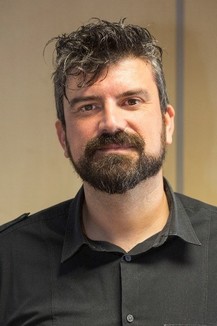 |
|
Iván Mora-Seró (1974, M. Sc. Physics 1997, Ph. D. Physics 2004) is researcher at Universitat Jaume I (UJI) de Castelló (Spain). On February 2002 he joined UJI. At 2006 he started his own research line on quantum dot sensitized solar cells. Currently he is leading the Group of Advanced Semiconductors at Institute of Advanced Materials (INAM) of UJI. He has published more than 250 paper in international research journal and 4 book chapters. He has been involved in more than 30 research projects funded from both public and by private entities. He has more than 100 contributions (more than 50 as invited speaker) to international conferences. He is inventor in 1 patent and he have been granted with: a scholarship 'Juan de la Cierva' and fellowship 'Ramon y Cajal' both from the Spanish government and 'Idea Award' (2011), awarded by the Valencia government, the "Research Award" from UJI (2019), Science Award from Radio Castelló SER (2020), and Excellence Research Award 2022 from Royal Chemical Sociaty of Spain (RSEQ). He has been grated with a fellowship from the Weizmann Institute of Science (Israel) in the year 2016. Iván Mora-Seró is an ERC Consolidator fellow (Project: No-Limit; 724424). Recent research activity was focused on new concepts for photovoltaic conversion based on nanoscaled devices and semiconductor materials following two mean lines: quantum dot solar cells with especial attention to sensitized devices and lead halide perovskite solar cells, been this last line probably the current hottest topic in the development of new solar cells. He is also currently involved in the development of light emitting devices (LEDs and light amplifiers).
Google Scholar
|
|
|
|
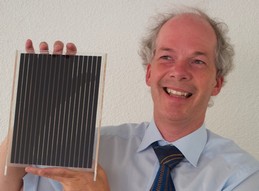 |
|
Tobias Balthasar Meyer (Dr.Sc.) born in Basle, Switzerland. Swiss citizen. After studying in 1992 chemical engineering at Swiss Federal Institute of Technology in Lausanne (EPFL), he made his Ph.D thesis in 1996 on solid-state dye solar cells in Prof. M. Graetzel's group at the EPFL. During his thesis studies, he founded Solaronix together with his twin brother Andreas in 1993. Since then, he acted as the CEO of Solaronix. Co-founder of Perovskia Solar, a startup created end 2021, being specialized in customized photovoltaic cells for energy harvesting to power electronic devices.
|
|
|
|
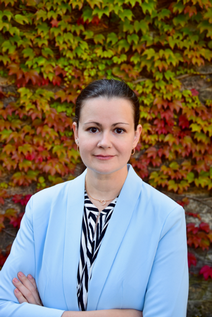 |
|
Prof. Dr. Yana Vaynzof is the Chair for Emerging Electronic Technologies at the Technical University of Dresden (Germany). She received a B.Sc. in Electrical Engineering from the Technion – Israel Institute of Technology (Israel) in 2006 and a M. Sc. In Electrical Engineering from Princeton University (USA) in 2008. In 2011, she received a Ph.D. in Physics from the University of Cambridge (UK). Prior to commencing her current position in 2019, Yana was a postdoctoral research associate at the Cavendish Laboratory, Cambridge (UK) and an assistant professor at Heidelberg University (Germany). Yana Vaynzof is the recipient of a number of fellowships and awards, including the ERC Starting Grant, Gordon Wu Fellowship, Henry Kressel Fellowship, Fulbright-Cottrell Award and the Walter Kalkhof-Rose Memorial Prize. Her research interests lie in the field of emerging photovoltaics focusing on the study of material and device physics of organic, quantum dot and perovskite solar cells by integrating device fabrication and characterisation with the application and development of advanced spectroscopic methods.
Google Scholar
|
|
|
|
|


 Chargement...
Chargement...